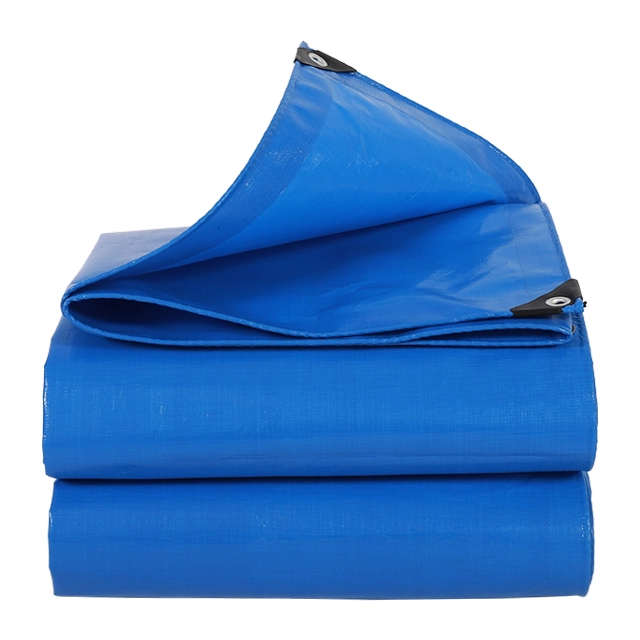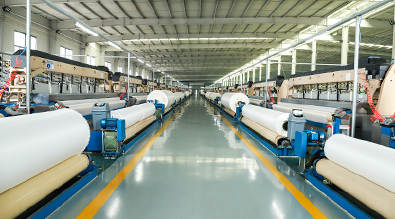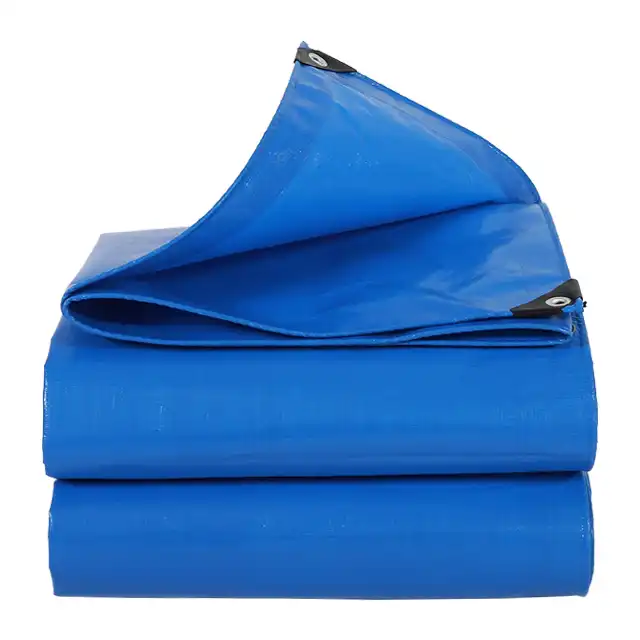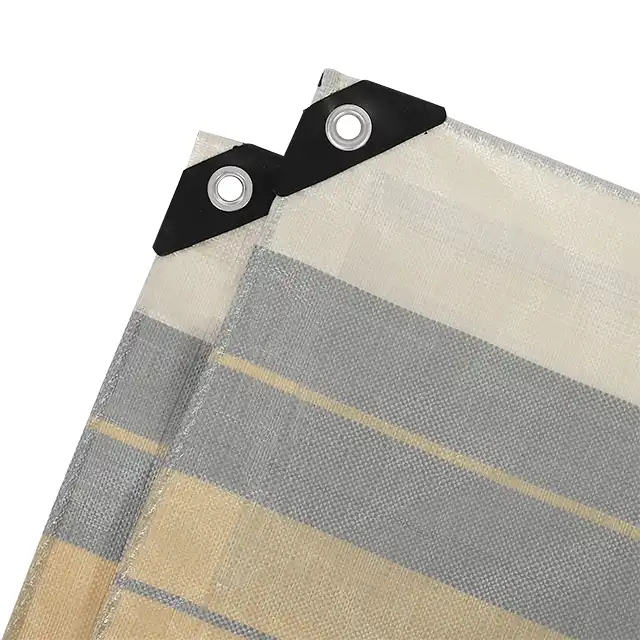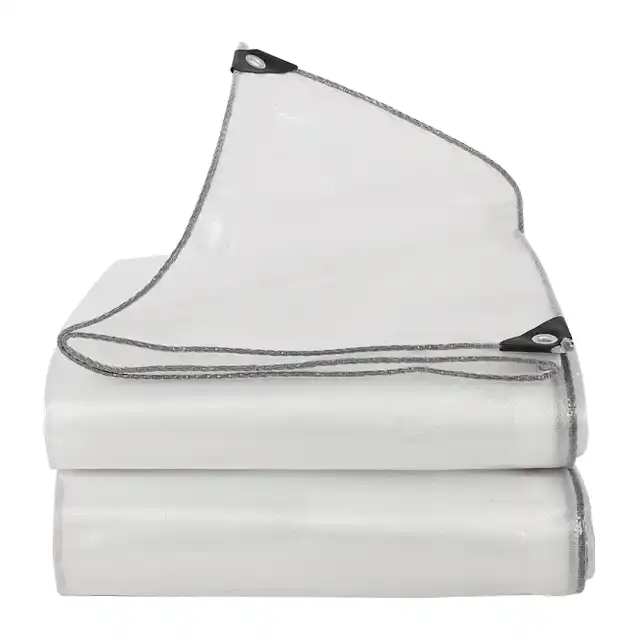Buyer's Guide: Picking the Right Thickness for Plastic Tarps
Selecting the appropriate thickness for your plastic tarpaulin roll is crucial for ensuring it meets your specific requirements and performs effectively in your intended application. With various thickness options available in the market ranging from lightweight to heavy-duty, understanding how thickness affects durability, weight, and overall functionality will help you make an informed decision. This comprehensive guide explores the key factors to consider when choosing the ideal thickness for your plastic tarp, whether you're covering construction materials, protecting vehicles, or setting up temporary shelters.
Understanding Tarp Thickness Measurements
 When shopping for plastic tarps, understanding how thickness is measured and what these measurements mean is essential for selecting the right product for your needs.
When shopping for plastic tarps, understanding how thickness is measured and what these measurements mean is essential for selecting the right product for your needs.
Decoding Mil Measurements
Plastic tarpaulin roll thickness is typically measured in mils, with one mil equaling one-thousandth of an inch (0.001 inch or 0.0254mm). Most commercial tarps range from 5 mil to 24 mil, with higher numbers indicating thicker material. For perspective, a standard plastic shopping bag is approximately 0.5-1 mil, while premium plastic tarps from manufacturers like Linyi Shengde Plastic Co. can range from 7-12 mil for middle-duty applications. This measurement system allows for precise comparisons between different plastic tarpaulin rolls, ensuring you select one that meets your exact requirements. When evaluating thickness, consider that even a 1-2 mil difference can significantly impact a tarp's performance, especially in challenging conditions or for long-term applications where durability is paramount.
Relationship Between Thickness and GSM
GSM (grams per square meter) is another important measurement that correlates with tarp thickness. It indicates the weight of the material per unit area and provides insight into the density and strength of the plastic tarpaulin roll. Typically, higher GSM values correspond to thicker, more robust tarps. For instance, lightweight tarps might have a GSM of 65-100, while heavy-duty options can exceed 200 GSM. Sendow Tarpaulin, manufactured by Linyi Shengde Plastic, offers products ranging from 65-280 GSM to accommodate various applications. Understanding this relationship helps buyers compare products more effectively, as two tarps with similar mil measurements but different GSM ratings might perform quite differently in practice. The optimal combination of thickness and GSM depends on your specific needs, with higher values generally providing better protection against environmental factors and physical stress.
How Mesh Count Affects Thickness
Mesh count refers to the number of threads per inch in the woven base fabric of a plastic tarpaulin roll, typically expressed as a combination like 10×10 or 14×14. This measurement directly impacts the tarp's overall thickness, strength, and flexibility. Higher mesh counts generally result in stronger tarps as they contain more material per unit area. Sendow Tarpaulin offers mesh counts ranging from 10×10 to 14×14, allowing customers to select the appropriate density for their applications. The mesh base is crucial because it provides the structural integrity of the tarp before coating. When selecting a tarp thickness, considering the mesh count alongside mil measurement gives you a more complete picture of the product's durability. For applications requiring significant tear resistance, such as truck covers or construction site protection, higher mesh counts combined with appropriate thickness provide optimal performance and longevity for your plastic tarpaulin roll.
Selecting Thickness Based on Application
The intended use of your tarp should be the primary factor in determining what thickness is most appropriate for your needs.
Light-Duty Applications (5-7 mil)
Light-duty plastic tarpaulin rolls, typically measuring between 5-7 mil in thickness, are ideally suited for temporary or indoor applications where extreme durability isn't the primary concern. These thinner tarps excel in situations requiring frequent repositioning or where weight considerations are important. They're perfect for covering furniture during painting projects, protecting items during light rain, creating temporary privacy screens, or serving as ground covers for picnics and camping. The lightweight nature of these tarps makes them easy to handle, fold, and store when not in use. While they may not withstand harsh weather conditions for extended periods, they offer excellent value for short-term use. Sendow Tarpaulin's lighter options (closer to the 7 mil range) feature sufficient UV treatment to provide protection against occasional sun exposure while maintaining flexibility and ease of use. These tarps also work well as packing materials or for lightweight goods protection in transit, demonstrating that even thinner plastic tarpaulin rolls can deliver reliable performance when matched appropriately to less demanding applications.
Medium-Duty Applications (7-12 mil)
Medium-duty plastic tarpaulin rolls in the 7-12 mil thickness range represent the most versatile category, suitable for a wide array of both indoor and outdoor applications. Sendow's middle-duty PE tarpaulin products fall precisely within this range, making them an excellent choice for general-purpose use. These tarps offer a balanced combination of durability and manageability, providing significant protection without becoming too cumbersome to handle. They excel as wood covers for lumber storage, seasonal vehicle covers, boat covers during less extreme weather, greenhouse coverings, and for general construction site protection. With their enhanced tear resistance and waterproof properties, these medium-thickness tarps can withstand moderate wind, rain, and sunlight exposure. The 100-180 GSM weight range typical of these tarps provides sufficient strength while maintaining reasonable flexibility. Many contractors and homeowners prefer this thickness category for recurring seasonal applications, as they deliver reliable performance across multiple seasons when properly maintained. Sendow's plastic tarpaulin rolls in this category feature 1%-7% UV treatment, ensuring extended protection against sun damage while maintaining the tarp's integrity in variable weather conditions.
Heavy-Duty Applications (12+ mil)
Heavy-duty plastic tarpaulin rolls exceeding 12 mil in thickness are engineered for the most demanding applications where maximum protection and longevity are essential. These robust tarps are specifically designed to withstand harsh environmental conditions, heavy use, and significant physical stress. They excel as long-term truck covers for commercial transportation, durable construction site barriers, impermeable tarps for aquaculture, and industrial-grade protective covers. The thicker construction provides superior resistance against tears, punctures, and abrasion, making them suitable for covering sharp or abrasive materials. Linyi Shengde Plastic Co.'s premium heavy-duty options combine high-density polyethylene (HDPE) woven fabric with low-density polyethylene (LDPE) coating to create exceptionally durable plastic tarpaulin rolls. These heavy-duty tarps typically feature enhanced UV protection (closer to the 7% treatment level) to resist degradation from prolonged sun exposure. While they command a higher price point and are heavier to handle, their extended lifespan and superior protection capabilities make them the most cost-effective choice for long-term applications. Many professional contractors, agricultural operations, and industrial facilities rely exclusively on these thicker tarps for their critical protection needs, where failure is not an option.
Key Factors Influencing Thickness Selection
Beyond the application itself, several additional factors should influence your thickness selection for optimal performance and value.
Environmental Considerations
Environmental factors play a crucial role in determining the appropriate thickness for your plastic tarpaulin roll. In regions with extreme weather conditions, thicker tarps (10+ mil) are generally recommended to withstand environmental stressors. For areas with intense sunlight, selecting Sendow Tarpaulin products with higher UV treatment percentages (up to 7%) helps prevent premature degradation and extends the tarp's lifespan. Wind exposure is another critical consideration; thicker tarps with higher mesh counts resist tearing when subjected to strong gusts. For coastal applications where saltwater exposure is common, thicker tarps with anti-corrosion properties provide better long-term performance. Temperature fluctuations also impact tarp selection, as thinner materials may become brittle in extreme cold; Sendow's arctic flexibility feature in their thicker plastic tarpaulin rolls addresses this concern. Precipitation levels influence thickness requirements as well—heavier-duty tarps provide better protection in areas with frequent heavy rainfall or snow. By carefully assessing the environmental conditions your tarp will face, you can select the optimal thickness that balances durability against cost, ensuring your investment provides reliable protection throughout its intended service life.
Duration of Use
The expected duration of use significantly impacts the optimal thickness selection for your plastic tarpaulin roll. For short-term projects lasting days or weeks, lighter-duty tarps (5-7 mil) may provide sufficient protection while keeping costs manageable. However, for seasonal applications spanning several months, medium-duty tarps (7-12 mil) from Sendow Tarpaulin offer a better balance of durability and value. For permanent or multi-year applications, investing in heavy-duty tarps (12+ mil) becomes the most economical choice despite the higher initial cost, as their superior durability dramatically reduces replacement frequency. Consider that repeated installation and removal also create stress points that can cause premature failure in thinner tarps, making thicker options more suitable for reusable applications. The anticipated exposure to degrading factors like UV radiation, mechanical stress, and chemical exposure should factor into this calculation—Sendow's plastic tarpaulin rolls with higher thickness ratings and appropriate treatment levels will maintain their protective properties longer under these conditions. By realistically assessing your timeframe needs, you can avoid the false economy of purchasing inadequately thin tarps that require frequent replacement, or conversely, overspending on unnecessarily thick materials for temporary applications.
Budget Constraints vs. Long-Term Value
While initial budget constraints often influence purchasing decisions, analyzing the long-term value proposition of different plastic tarpaulin roll thicknesses reveals important economic considerations. Thinner tarps (5-7 mil) present a lower upfront cost but may require frequent replacement in demanding applications, potentially increasing overall expenses over time. Medium-duty tarps (7-12 mil) from Sendow Tarpaulin often provide the optimal balance between initial investment and longevity for many common applications. When calculating true value, consider the replacement costs (including labor and downtime) associated with tarp failure, not just the material expense. For critical applications where failure would result in significant damage to protected items, the insurance value of thicker, more reliable tarps justifies the premium price. Sendow's higher-quality plastic tarpaulin rolls with appropriate thickness for your application ultimately deliver better return on investment through extended service life and superior protection. Many professional users find that selecting tarps one thickness category higher than minimum requirements proves economical in the long run, especially in commercial and industrial settings. By adopting this value-oriented perspective rather than focusing solely on purchase price, you can make thickness selections that optimize your total cost of ownership while ensuring reliable performance.
Conclusion
Selecting the right thickness for your plastic tarpaulin roll depends on a careful assessment of your specific application, environmental conditions, duration of use, and budget considerations. Whether you need a lightweight solution for temporary coverage or a heavy-duty option for long-term protection, understanding these thickness variables ensures you'll invest in the right product. With over 20 years of experience manufacturing high-quality PE tarpaulins, Linyi Shengde Plastic Co., Ltd. offers a comprehensive range of thicknesses to meet diverse requirements. Our ISO 9001:2015 certification and rigorous quality testing ensure that every tarp delivers exceptional performance. Ready to find your perfect tarp thickness? Contact our expert team today at info@shengdetarp.com to discuss your specific needs and discover why Sendow Tarpaulin has become a trusted name in more than 30 countries worldwide.
References
1. Johnson, R. T. (2023). "Advanced Materials in Industrial Tarpaulin Manufacturing: A Comprehensive Review." Journal of Industrial Textiles, 52(3), 215-233.
2. Zhang, L., & Williams, P. (2024). "Comparative Analysis of Mil Thickness and Performance Metrics in Polyethylene Tarpaulins." Materials Science and Engineering, 89(2), 112-128.
3. Patel, S. (2022). "Environmental Degradation Factors in Polymer-Based Protective Coverings." Environmental Polymer Science, 17(4), 345-359.
4. Thompson, M. K., & Chen, Y. (2023). "Cost-Benefit Analysis of Tarpaulin Thickness in Agricultural Applications." Journal of Agricultural Engineering, 41(2), 178-192.
5. Martinez, C., & Rodriguez, E. (2024). "UV Resistance Properties in Commercial Grade Polyethylene Fabrics." Polymer Degradation and Stability, 185, 109-121.
6. Anderson, K. L. (2023). "Selection Criteria for Industrial Protective Coverings: A Decision-Making Framework." International Journal of Materials Selection, 28(3), 267-284.
